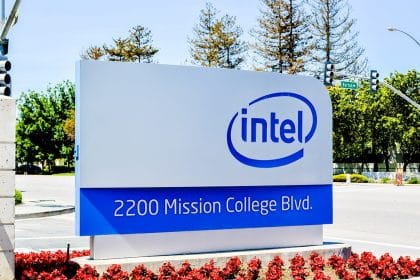Intel unveils the second-generation setup of its Bonanza mine chips with an ultra-low-voltage energy-efficient Bitcoin mining ASIC that can deliver a performance of 40 Terahashes per second (40 TH/s).
During the ongoing 2022 International Solid-State Circuits Conference (ISSCC), chipmaking giant Intel has unveiled a new mining chip ‘Bonanza Mine’ ASICs. This is basically a high-performance 3,600 Watt miner comprising 300 tiny efficient chips.
As explained by Intel, the Bonanza Mine BMZ2 is an ultra-low-voltage energy-efficient Bitcoin mining ASIC that can deliver a performance of 40 Terahashes per second (40 TH/s). Intel’s second-generation Bonanza mine ASIC chip will compete directly with giants such as MicroBT and Bitmain.
As said, the BMZ2 chips from Intel will follow a similar architecture to that of the BMZ1 chips. However, Intel hasn’t shared many details for its second-generation chips and systems.
Intel has been working on its high-performance Bitcoin mining chaps over the last few years. The company also filed a patent back in 2018. The Intel patent proposed to reduce the overall power consumption by 15%.
Back then, the company said: “Intel has done design work around SHA 256 optimized ASICs for several years beginning with pathfinding work done in Intel Labs.”
With the recent news, Intel has officially acknowledged its efforts towards Bitcoin mining chips. Thus, Intel becomes part of the Bitcoin Silicon program that includes players like BLOC, GRIID infrastructure, and Argo blockchain.
Intel and Its Competitors
Tech giant Intel has been certainly stepping up its game with the next generation of Bonanza Mine chips. Each of these Bonanza Mine ASIC comprises 258 mining engines with each engine computing parallel SHA256 double hashes.
Popular publication Toms Hardware explains the math behind this. It notes:
Each ASIC operates at 1.35 to 1.6 GHz at 75C, consuming an average of 7.5W apiece while hitting up to 137 Ghash/s. That works out to 55 J/THash/s at 355mV. Zooming out to the 300 chips in the system, there’s a total of 4,248mm^2 of silicon that delivers up to 40TH/s at 3600W of power consumption. It’s clear that Intel will need to be far more competitive against Bitmain and MicroBT’s existing miners. For instance, Bitmain’s Antmienr S19j Pro 104T does 104 THash/s at 3,068W, while the newest model, the S19j XP, does 140 THash/s at 3010W.
Note that this is only for the first-generation setup. Intel has yet to announce the official details and the specifications for the second-generation setup. On the other hand, the Bitcoin network hashrate has touched a new all-time high recently. Thus, further mining is likely to demand more hardware power.
next